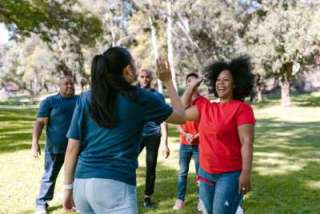Emotional
Emotional
An hour of organized movement (i.e. a workout) several times a week cannot undo the other choices we make outside of our workouts. Many people sit most of the day at work, at home, or in the car. Simply getting out of your chair for a minute every half hour can help reduce the impact of sitting for hours. Components in a balanced Total Health program include but are not limited to: Cardiovascular exercise, Full body strength training, Balance, Flexibility, Mobility, and Restorative activities. It also includes ways to avoid static positions, to move joints through a full range of motion, and to move in multiple dimensions like we do in real life.


In order to build quadriceps strength and improve fitness without putting excessive stress on tentative or already painful knees, you might want to consider adding some backward travel to your training program. Try a few short bouts of walking backward up a gently inclined slope, on a slightly ramped treadmill, or jogging backward to test out how it feels.
Who Might Be a Candidate?
People who may benefit from backward-walking training include anyone who:
- Is undergoing post-surgical knee joint rehabilitation.
- Suffers from muscle strains of the hip, groin, hamstrings, or lower back
- Suffers from lower extremity injuries including sprained ankles, Achilles tears, or shin splints
- Has tried everything including ibuprofen, ice/heat treatments, complete time off from training, physical therapy, stretching, and more traditional strength training without sufficient results
- Is looking for a different stimulus or cross-training option
- Needs to be able to change directions rapidly and occasionally run backward in his or her sport (such as soccer, football, basketball, rugby, or lacrosse)





